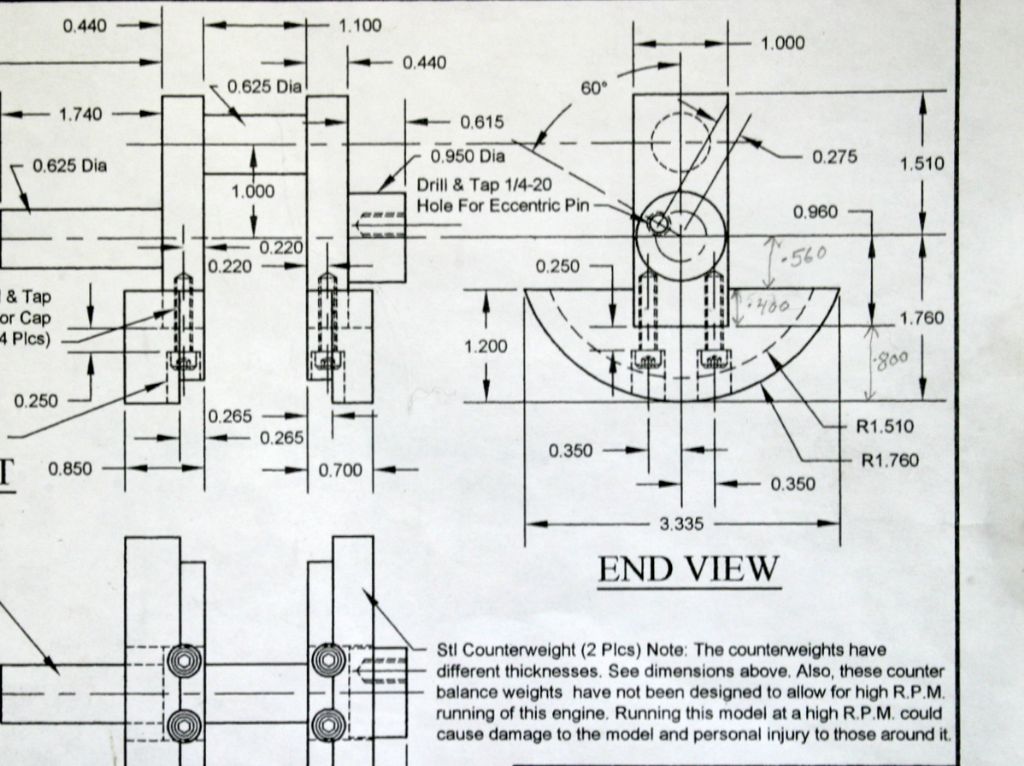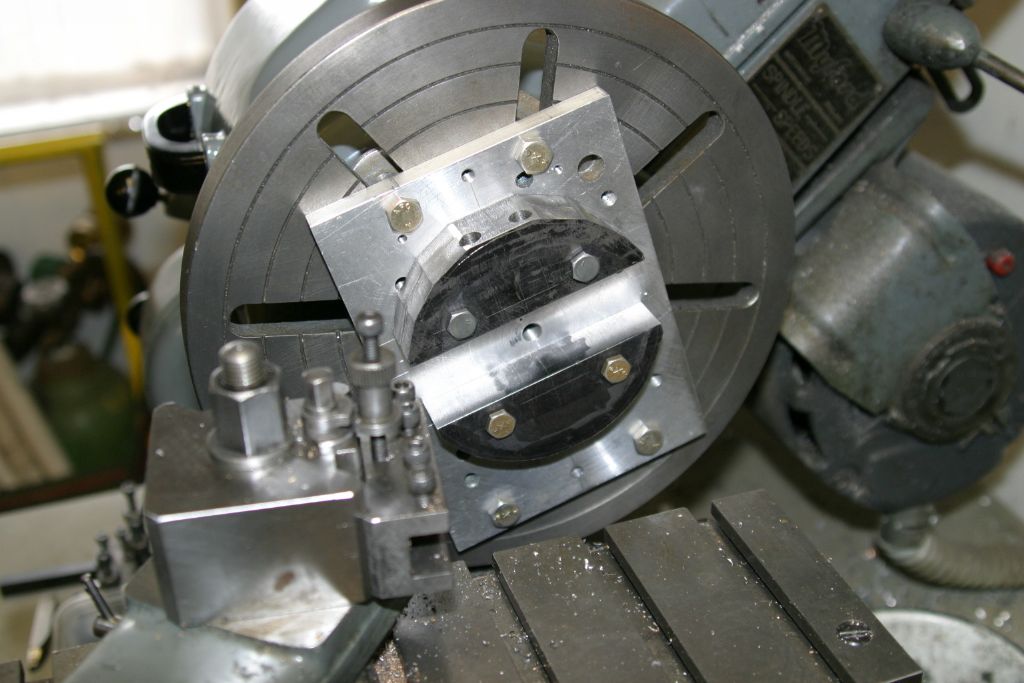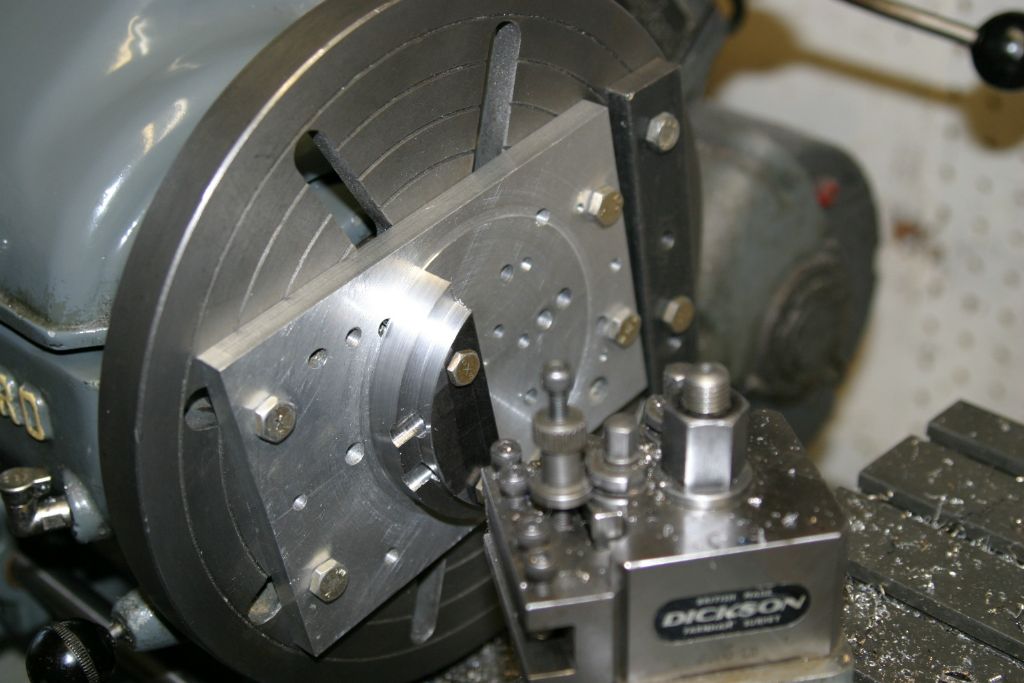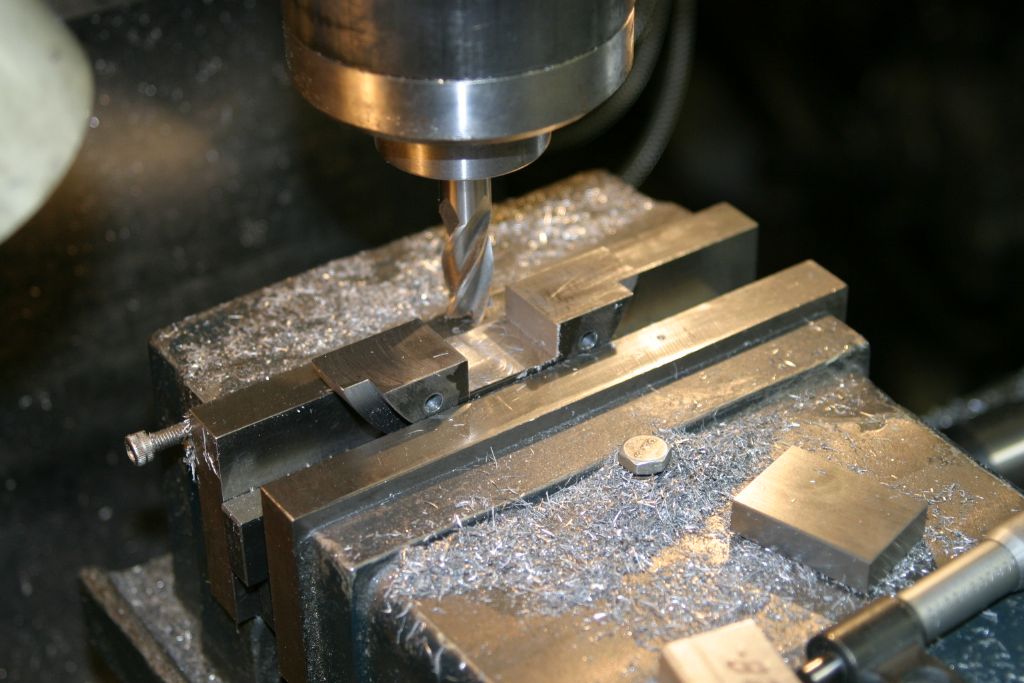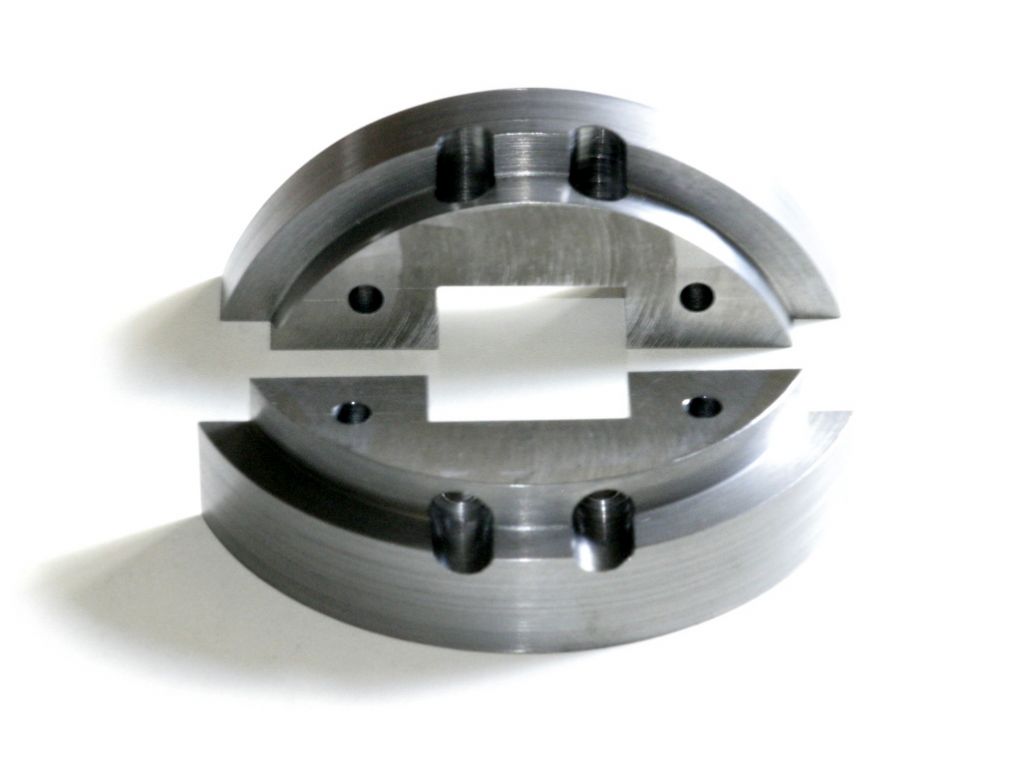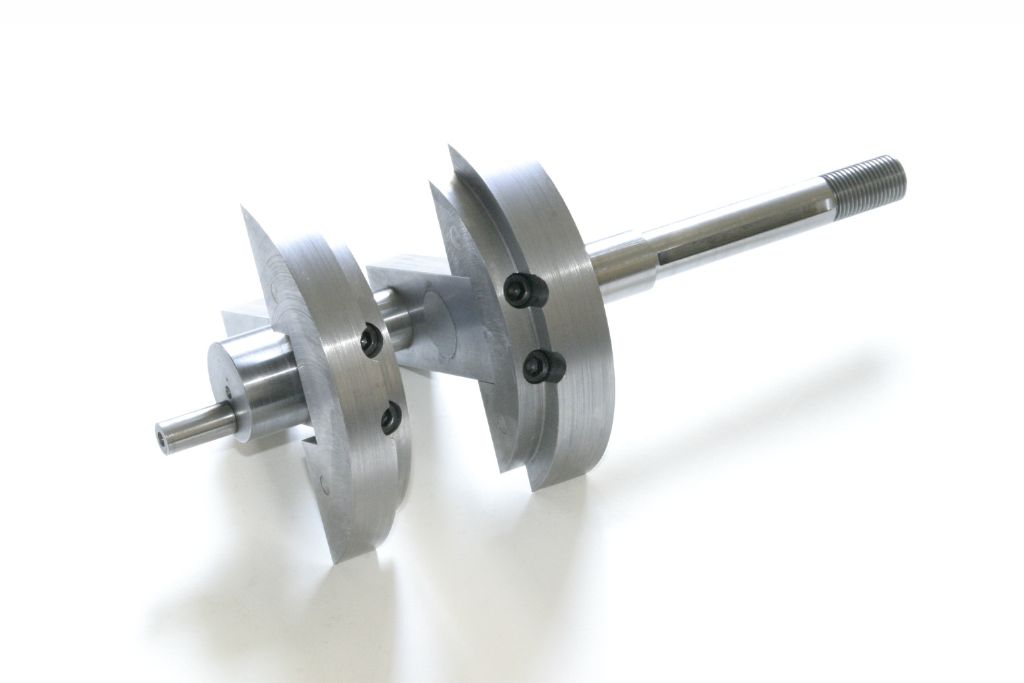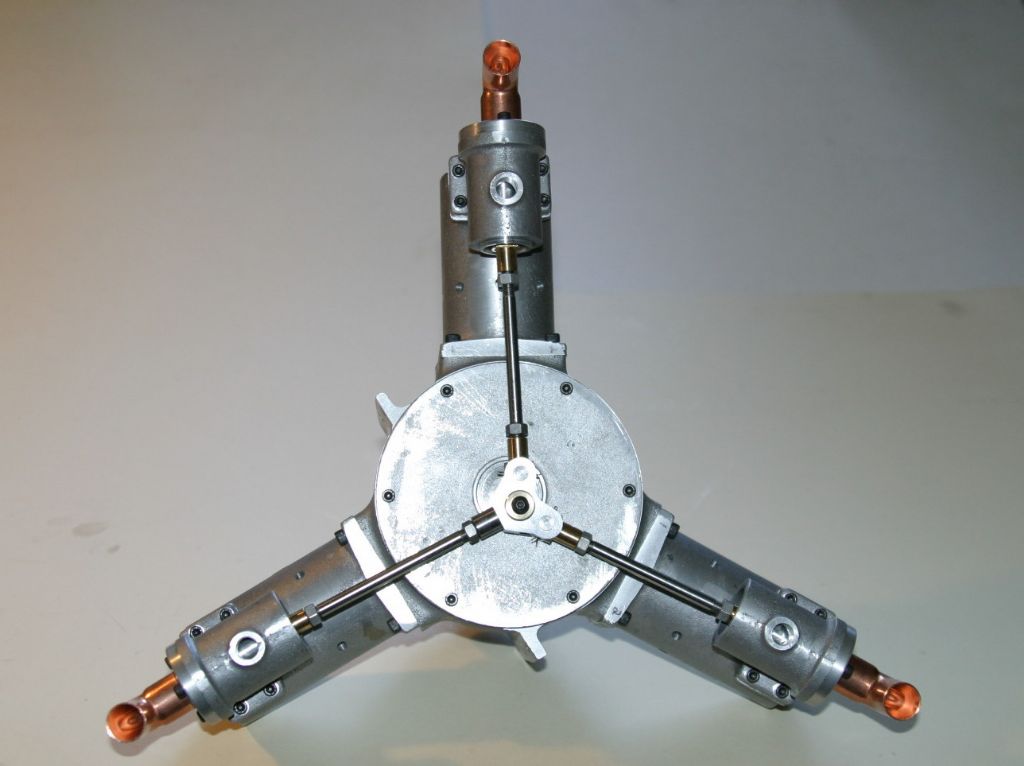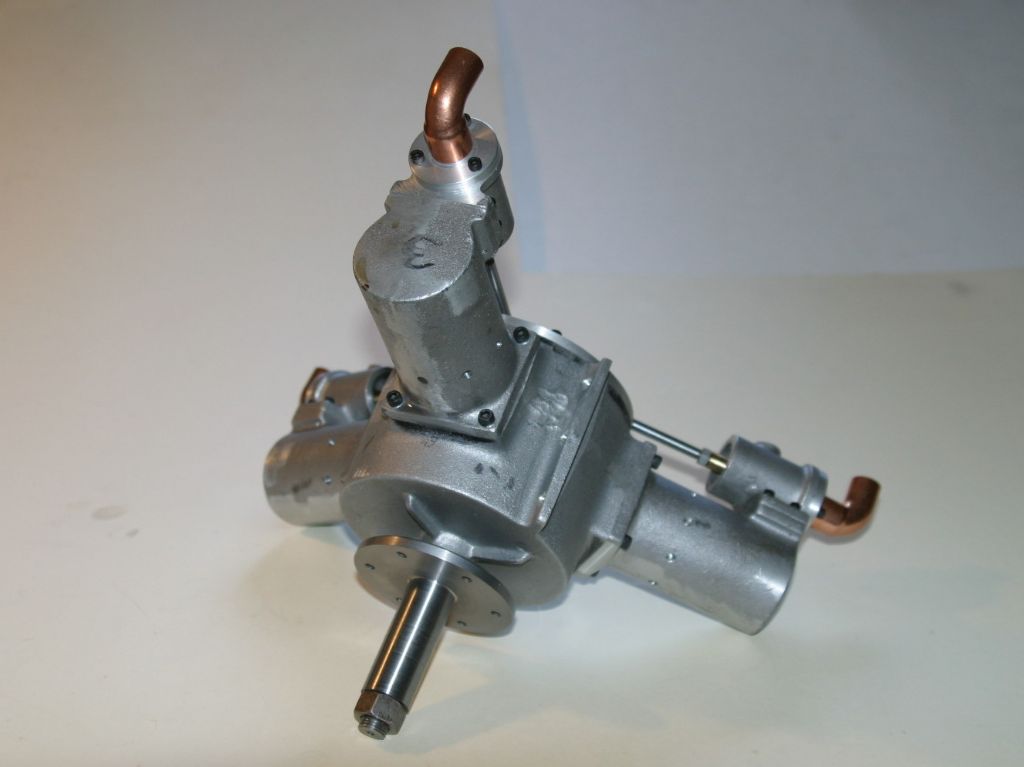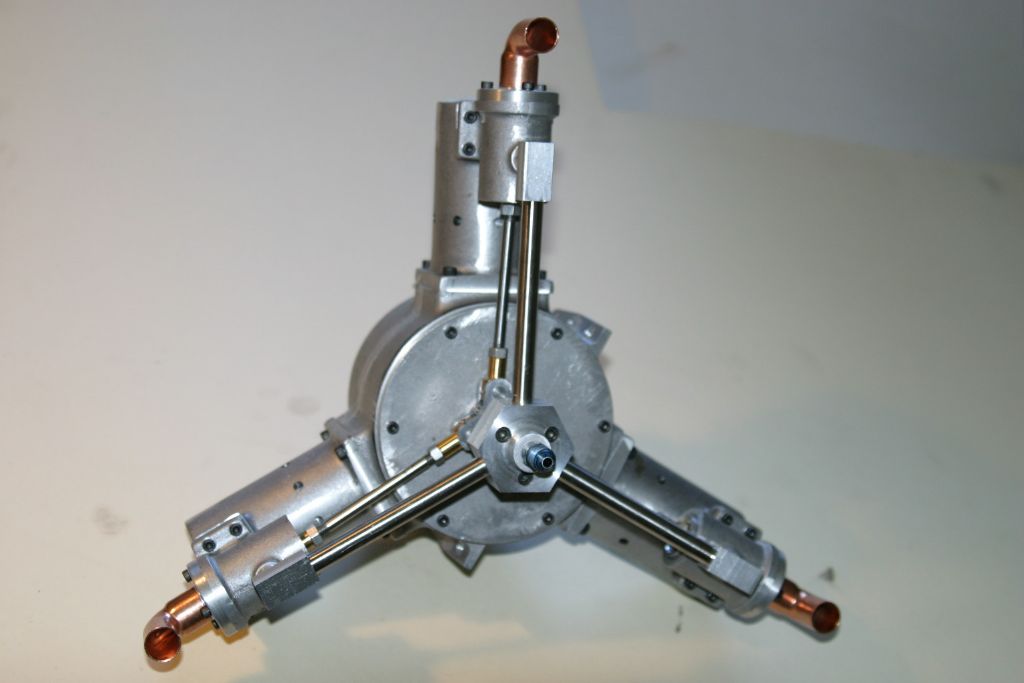
For the crankshaft counter weights, two slices of steel were sawn off some black plate and machined to be slightly oversize, finishing at 3.375 ( 3.378 ), 1.240 ( 1.260 ), and .851 ( .701 ). The holes for the 10-32 hex socket head cap screws for fixing them to the crank web were then drilled #21 tapping size and counterbored 5/16" diameter. Also two #21 holes were drilled in each for some 10-32 bolts to fix them to a jig plate to be bolted to the faceplate for turning the weights to the semi circular shape. These holes were positioned so that the heads wouldn't be in the way of any of the turning operations. When completed these holes will be plugged with some short lengths of 3/16" dia. rod. I had first considered putting the hold down bolts in the centre section that would be cut out for the socket that goes around the crank web but felt that this wouldn't provide a secure enough hold for the intermittent turning operations.
Before mounting on the faceplate for turning, the corners were sawn off and they were milled to remove the remaining corners and bring them to a roughly semi circular state so there would be less shock loads during the turning.

Embryo counterweights mounted on the jig plate and centred on the faceplate using a wobbler in preparation for turning the outsides to the 1.760" radius. As pictured the balance was good enough to run at the lathe's lowest direct speed ( 281 rpm ).

The outsides turned to dimension and the .250 x .265 reduced section on the corner of the outer diameter turned to size. Since the two halves are of different thickness, once the thicker one had been turned to .265" deep the thinner was only be .115" deep, therefore the thick one was removed to finish turning the thinner one.

Finish turning the recess on the thinner weight, note the extra weight attached to the faceplate to counteract the out of balance.

Milling out the recess for the end of the crank web, after chain drilling and sawing out the bulk of the waste. The holes for the fixing screws were then spotted through into the webs and the webs tapped 10-32, and the holes in the counterweights opened up to clear the #10 screws ( #10 drill ).

The finished crankshaft counterweights with the holes used to fasten them to the faceplate yet to be filled in.

The crankshaft with the finished counterweights attached.
After a trial assembly it was found that the two offset con rods foul the edges of the crankcase as they are rotated. This wasn't totally unexpected as there is a note on the crankcase plan "It may be necessary to grind this inside corner of the block for piston rod clearance." So out with the Dremel and a burr to carve away to provide some clearance, after taping over the crankshaft bearings to keep the filings out.
 John Purdy.
John Purdy.

